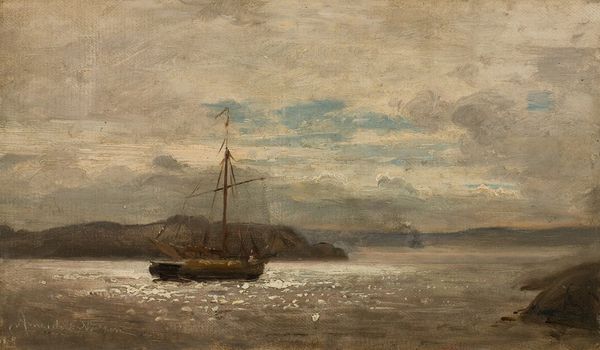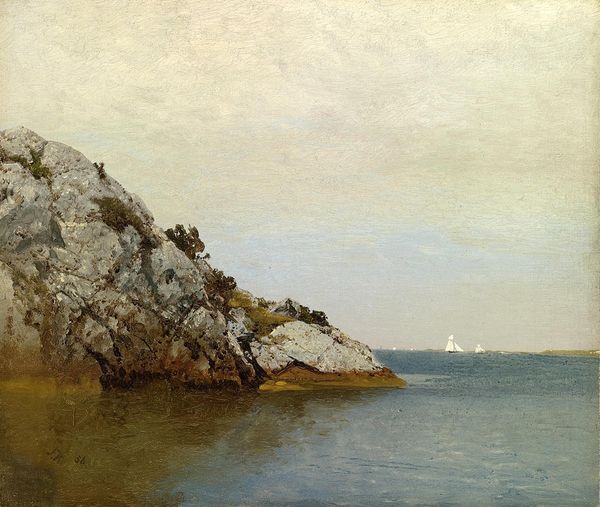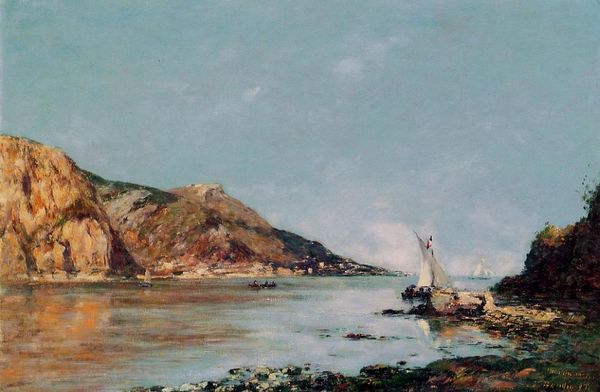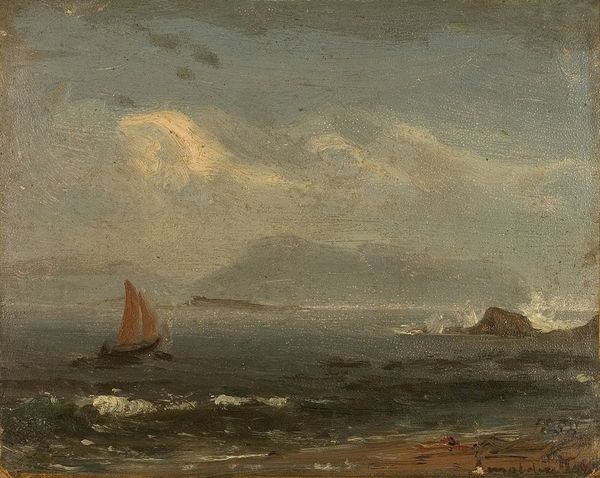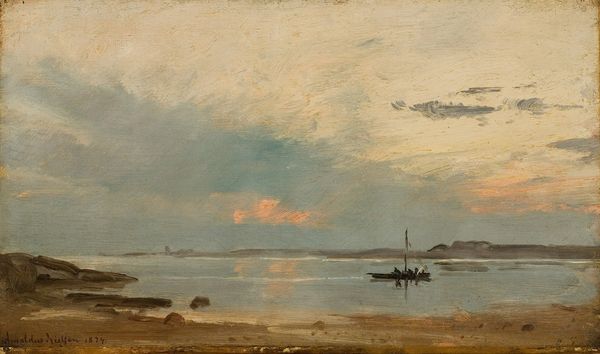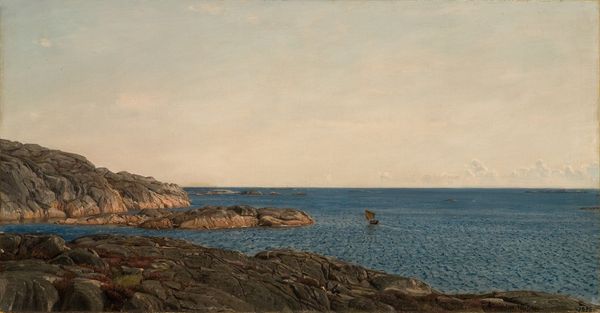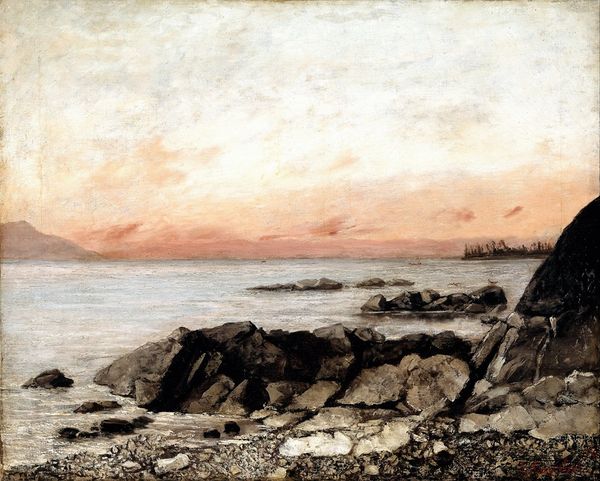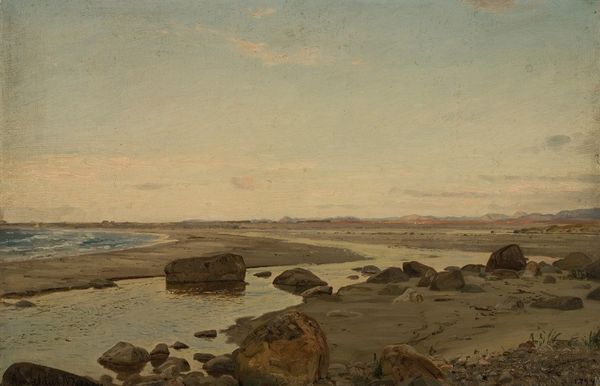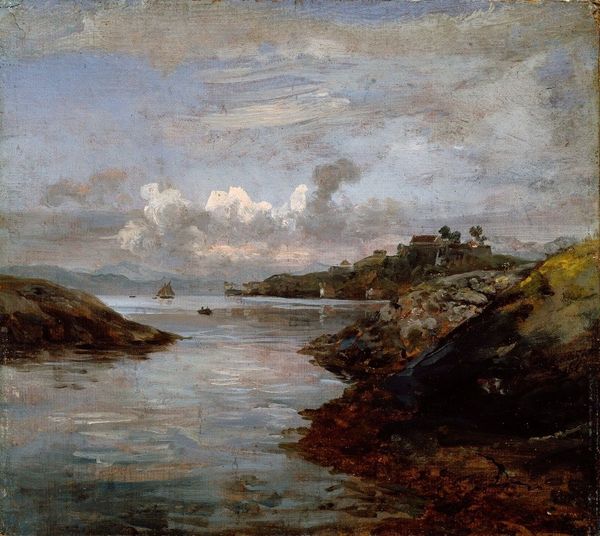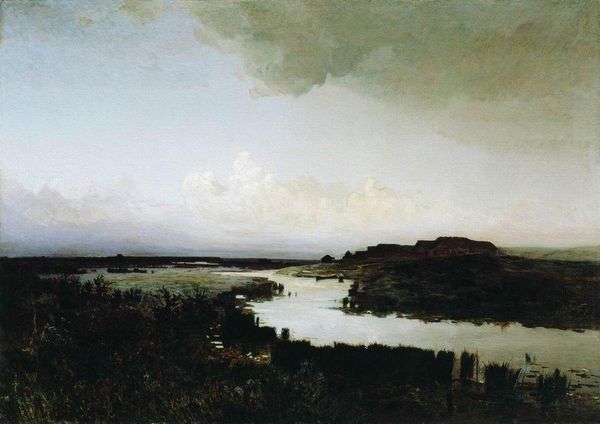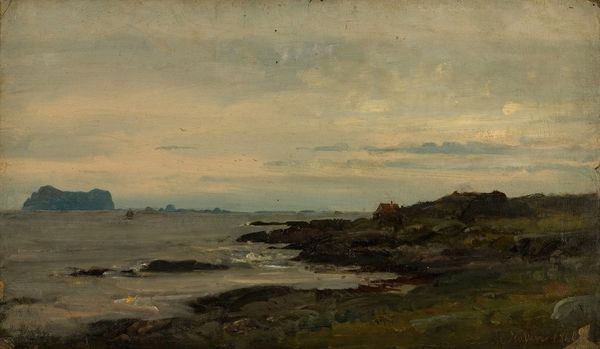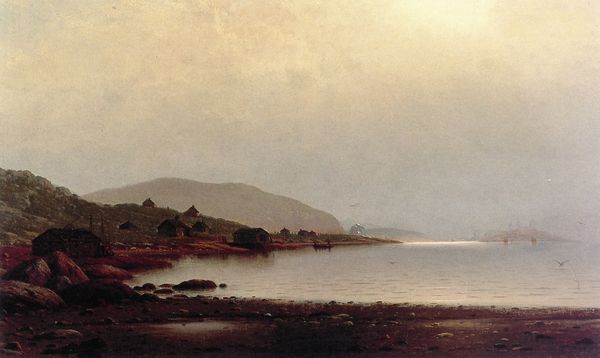
painting, oil-paint
#
sky
#
painting
#
oil-paint
#
landscape
#
luminism
#
impressionist landscape
#
oil painting
#
romanticism
#
realism
#
sea
Copyright: Public domain
Editor: So, here we have "The Labrador Coast" by William Bradford, and it appears to be an oil painting. There’s a sort of hushed stillness to it; everything is soft and muted. What do you see in it? Curator: Well, I see a conversation, quiet but insistent, between light and place. The muted palette isn’t just happenstance. It speaks to the Luminist movement, a kind of understated cousin of Romanticism. Bradford isn’t just painting a landscape; he’s painting atmosphere. The air itself feels heavy, pregnant with unspoken stories of explorers, whalers, and indigenous communities carving out lives in that harsh environment. Don't you get a feeling of something elemental being captured here? Editor: I do. That large iceberg is an arresting sight, almost daring the boats to come any closer. Curator: Yes, and consider that Bradford himself made several expeditions to the Arctic. He wasn’t just a painter; he was an explorer in his own right, driven by a potent mixture of scientific curiosity and artistic ambition. The "Labrador Coast" isn't simply a visual record but a deeply personal and felt experience translated onto canvas. There’s a touch of Melville's Moby Dick lurking there, don’t you think? A touch of human drama played out on an indifferent stage. Editor: Definitely. The small boats feel vulnerable next to that iceberg. I guess I’m seeing it less as just a pretty picture, and more as a story about humanity versus nature. Curator: Precisely! And isn't it incredible how a simple oil painting can contain all that, waiting to be discovered? Editor: It really is. It’s like peeling back the layers of an onion, and discovering a whole history.
Comments
No comments
Be the first to comment and join the conversation on the ultimate creative platform.
